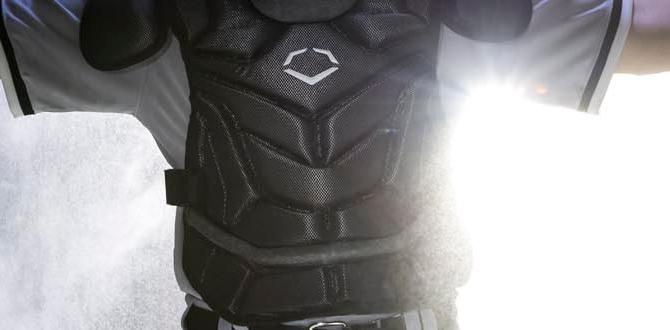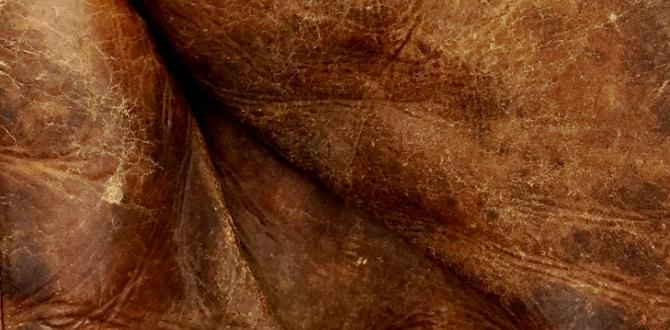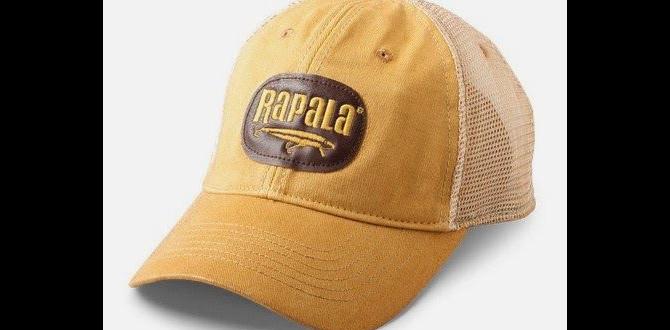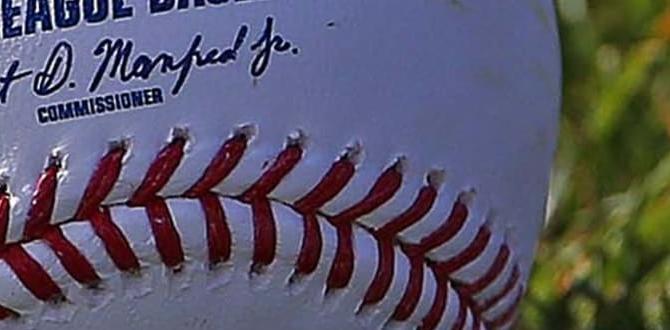Quick Summary: Choosing the right youth catchers glove is key for young players. A well-fitting glove improves control, protects hands, and helps develop proper catching skills. This guide covers glove types, sizing, and must-have features for every young catcher.
Finding the right gear can feel like a big challenge when you’re just starting out in baseball. For young catchers, one piece of equipment stands out as absolutely critical: the catcher’s glove. It’s more than just a glove; it’s your primary tool for stopping pitches, making plays, and staying safe behind the plate. If your glove doesn’t fit well or isn’t designed for catching, you might struggle with dropped balls, feel unnecessary sting on impact, or even get injured. Don’t worry, though! We’re going to break down exactly what you need to know to pick the perfect youth catchers glove. We’ll cover everything from glove types to the best ways to size it up so you can feel confident and ready for game day.
The Catcher’s Glove: Why It’s a Game Changer
Think about what a catcher does. You’re squatting behind home plate, facing fastballs, curveballs, and changeups. You need to catch every pitch cleanly, block balls in the dirt, and be ready to throw out runners. A specialized catcher’s mitt isn’t just a bigger baseball glove; it’s built specifically for these demanding tasks.
Unlike a fielder’s glove, which has individual finger stalls and is open for quick transfers, a catcher’s mitt is a mitt. There are no individual fingers. It’s heavily padded, deep, and round. This design serves a few crucial purposes:
- Ball Control: The deep pocket helps “trap” the ball, preventing it from bouncing out. This gives the pitcher more confidence and helps you secure strikes.
- Impact Absorption: Pitches can arrive at high speeds, even for young players. The extra padding protects your hand from the sting and potential injury.
- Durability: A catcher’s mitt is built to take a beating, pitch after pitch, game after game.
- Player Confidence: When you have a glove you trust, you can focus on your game, not on worrying about your equipment.
For young players, the right glove can dramatically speed up development. It helps them learn the proper mechanics of catching and makes the learning process much more enjoyable. A glove that’s too big, too small, or not designed for the position can be a major roadblock.
Understanding Youth Catcher’s Mitts: Key Features
When you start looking at catcher’s mitts for young players, you’ll notice they share many features with adult mitts, but are scaled down for smaller hands and less powerful throws. Here’s what makes a youth catcher’s mitt special:
1. Size Matters: Finding the Right Fit
This is probably the most important factor. Youth catcher’s mitts typically range from 30 to 34 inches in circumference. Smaller youth players might start with mitts around 30-31 inches, while older or larger youth players might move up to 32-33 inches. A mitt that’s too big will be hard to close, making it difficult to catch the ball. A mitt that’s too small won’t offer enough protection or pocket depth.
Pro Tip: The circumference is measured along the inside of the glove, from the thumb across the pocket to the pinky finger. Don’t confuse this with the length measurement some manufacturers use.
2. Padding: Protection is Paramount
Youth mitts still need substantial padding, but it might be slightly less dense than adult models to allow younger players to close the glove more easily. You’re looking for a good balance between shock absorption and flexibility. Too stiff, and the glove will be impossible for a young player to break in and close. Too light, and it won’t offer adequate protection.
3. Pocket Depth: The Key to Control
A deep pocket is essential for a catcher’s mitt. This allows the ball to sink into the glove and stay there, making it easier to secure strikes and prevent pitches from bouncing out. Youth mitts will have a deep pocket, but it might not be as extreme as some professional patterns. The goal is to help the young catcher “hide” the ball after catching it.
4. Break-In Period: Getting It Game Ready
All leather gloves need to be broken in, and catcher’s mitts are no exception. However, youth models are often made with softer leathers or have more pre-treatment to make them easier to break in. This is crucial for young players who don’t have the hand strength or experience to work extensively with a stiff glove. Look for terms like “pre-broken in” or “game-ready” if ease of break-in is a priority.
The process of breaking in a glove involves working the leather so it becomes more pliable and forms to the player’s hand and the shape of the ball. While many youth gloves come partially broken in, some additional work will likely be needed. This can include:
- Manual Conformation: Flexing the glove repeatedly with your hand.
- Glove Mallets/Weights: Using specialized tools to pound the pocket and hinges.
- Glove Oil/Conditioner: Applying conditioners to soften the leather (use sparingly and according to manufacturer recommendations).
- Playing Catch: The best way to break in a glove is to use it!
For more in-depth glove care and breaking-in techniques, you can check out resources like this guide on “Glove Care and Maintenance” from https://www.mlb.com/, the official website of Major League Baseball, which offers general baseball tips.
5. Wrist Strap and Fit: Securing the Glove
A secure fit is vital. The wrist strap on a youth catcher’s mitt should be easily adjustable to accommodate a smaller hand. Look for velcro or a simple buckle system. The glove should feel snug without being too tight, allowing for full range of motion in the wrist and fingers.
Types of Youth Catcher’s Mitts
While the core design is similar, you might find a few variations in youth catcher’s mitts:
1. The All-Around Youth Mitt
This is the most common type. It’s designed for general youth baseball and softball play, offering a good balance of protection, pocket size, and ease of closing. These mitts are usually made from leather or a high-quality synthetic material.
2. The “Game Ready” / Pre-Broken In Mitt
Manufacturers often offer gloves that are designed to be used almost immediately. These have softer leathers and more flexible construction, requiring less effort from the player to make them game-ready. This is a fantastic option for very young players or those who struggle with the break-in process.
3. The “Pro” Youth Mitt
These mitts often mimic the patterns of adult professional gloves but in a smaller size and with a slightly easier break-in feel. They might use higher-grade leathers and offer more advanced features, though they can also be more expensive.
Choosing the Best Youth Catcher’s Glove: A Step-by-Step Guide
Here’s how to navigate the process of selecting the perfect glove for your young catcher:
Step 1: Determine the Correct Size
As mentioned, this is crucial. For most youth baseball leagues, the ideal size will be between 30 and 33 inches.
- Ages 5-7: Typically 30-31 inches
- Ages 8-10: Typically 31-32 inches
- Ages 11-13: Typically 32-33 inches
Always check the specific league rules, as some might have regulations on glove size, especially for younger age groups. It’s always best to try a glove on if possible. Have the young player wear it and try to close it around a baseball. If they can’t close it effectively, it’s too stiff or too big (or both).
Step 2: Consider the Material
Youth catcher’s mitts come in two main material types:
Leather Mitts
- Pros: More durable, molds better to the hand over time, offers better feel and control, generally higher quality.
- Cons: Requires more break-in time, can be more expensive, needs proper care to prevent drying out.
Synthetic/Composite Mitts
- Pros: Lightweight, often “game ready” out of the box, more affordable, easier to clean.
- Cons: Less durable, may not mold as well, can feel less responsive, protection might be less robust.
For serious development and longevity, a good quality leather mitt is usually the better long-term investment, provided the player (or parent/coach) is willing to help with the break-in. For younger kids just starting, a synthetic or easily breakable-in leather mitt is a great starting point.
Step 3: Evaluate Padding and Construction
Feel the mitt. Does it feel protective? Can the pocket easily get sticky and deep? Look at the stitching – is it strong and neat? A well-constructed mitt will have reinforced stitching in high-stress areas.
Step 4: Pocket Design
The pocket should be deep and well-defined. You can often tell this by looking at the mitt from the side. The “heel” of the glove should allow the pocket to really scoop and hold a ball. Some youth mitts have a T-web, while others have a more closed web, which can help young catchers hide the ball from runners.
Step 5: Wrist Adjustment
Ensure the wrist strap is easy to adjust and holds securely. This allows for a custom fit, which is essential for a young player who is still growing and developing hand strength.
Top Brands and Models for Youth Catchers Gloves
Several reputable brands consistently produce high-quality youth catcher’s mitts. While specific models change yearly, these brands are known for their quality and performance:
Popular Brands to Consider:
- Wilson: Known for their A2000 and A2K lines (though these are often more advanced and may require more break-in), they also offer excellent, more accessible youth options like the Pro Series or Showtime models.
- Rawlings: A consistent favorite, Rawlings offers the Select Pro Lite series, Liberty Advanced, and Heart of the Hide for youth, which blend quality leather with manageable break-in.
- Mizuno: Their Global Elite and Franchise series often feature high-quality materials and designs suitable for young catchers, focusing on flexibility and comfort.
- Easton: While known for their bats, Easton also makes solid gloves. Their lineup often features lighter, more adaptable gloves for younger players.
When looking at specific models, always read reviews and check specifications regarding size, materials, and intended age group. Many online retailers provide detailed filter options to help you narrow down your choices.
Common Mistakes to Avoid When Buying a Youth Catcher’s Mitt
To make sure you’re getting the best glove for your young player, steer clear of these common pitfalls:
- Buying a Fielder’s Glove: This is the most frequent mistake. A fielder’s glove is NOT designed for catching. It lacks the padding, pocket depth, and hand protection needed.
- Over-Sizing the Glove: While players might grow into a larger glove, a mitt that is too large will be very difficult for a young player to control and close, hindering their development and confidence sooner rather than later.
- Ignoring Break-In Needs: Expecting a glove to be perfectly soft and pliable right out of the box can lead to frustration. Understand that a good leather glove requires time and effort. If break-in is a concern, opt for models specifically marketed as “game ready.”
- Focusing Only on Price: The cheapest option is rarely the best for performance and durability. Investing a bit more in a quality mitt can save money in the long run and improve the player’s experience.
- Not Trying it On (If Possible): Every hand is different. If you can, have the player try on several gloves to see how they feel and how easy they are to close.
The Catcher’s Stance: More Than Just a Glove
While the glove is undoubtedly vital, proper catching technique complements it perfectly. A good stance allows the catcher to present a target, receive pitches cleanly, and react quickly. For a beginner catcher, focusing on a stable, athletic stance is key:
- Feet Shoulder-Width Apart: Provides a solid base and balance.
- Slight Bend at the Knees and Hips: Lowers the center of gravity.
- Chest Up: Helps maintain vision of the pitcher.
- Hands in the “Mitt” Position (for receiving): The glove should be out in front, presenting a clear target. The bare hand should be cupped and ready to cover the glove.
Practicing this stance regularly, even without a ball, helps build muscle memory. For a deeper dive into catcher’s specific drills and techniques, consider resources that focus on youth baseball training. Organizations like USA Baseball offer a wealth of training information for players, parents, and coaches, including drills for developing fundamental skills.
Youth Catcher’s Glove vs. Adult Catcher’s Glove: Key Differences
It’s important to understand that youth catcher’s mitts are specifically designed with younger players in mind. Here’s a breakdown of the primary distinctions:
| Feature | Youth Catcher’s Glove | Adult Catcher’s Glove |
|---|---|---|
| Size/Circumference | Typically 30-34 inches, tailored for smaller hands. | Typically 33-35 inches, designed for larger hands. |
| Padding Density | Often slightly less dense to aid in closing. | Heavier padding for maximum impact absorption. |
| Break-In Required | Usually easier break-in, some are “game ready.” | Often requires significant break-in time due to stiffer leather. |
| Weight | Lighter overall for easier maneuverability. | Heavier, reflecting the use of thicker leathers and more padding. |
| Cost | Generally more affordable. | Can be significantly more expensive, especially for premium models. |
| Wrist Strap | Simpler, more adjustable closure (velcro, etc.) for small hands. | Typically a more robust buckle or strap system. |
Using an adult glove on a young player is a common mistake that leads to poor performance and potential injury. The glove won’t fit properly, making it difficult to control and catch the ball, and the extra weight can be cumbersome.
FAQ: Your Youth Catcher’s Glove Questions Answered
Q1: What size catcher’s glove does a 10-year-old need?
A: For most 10-year-olds, a youth catcher’s glove in the 31-32 inch range is typically appropriate. However, consider the player’s hand size and the specific league’s recommendations. Trying it on is always best.
Q2: How do I break in a new youth catcher’s mitt?
A: Start by flexing the glove repeatedly. Apply a small amount of glove oil or conditioner to the leather, being careful not to over-saturate it, and then pound the pocket. The best way is to play catch with it regularly! Many youth mitts are game-ready, so they may require less break-in than adult gloves.
Q3: Can my child use a regular baseball glove at catcher?
A: No, it’s highly recommended NOT to use a regular fielder’s glove at catcher. Catcher’s mitts are specifically designed with extra padding and a deep pocket to protect the hand and control pitches. Using a fielder’s glove can lead to injury and make catching much more difficult.
Q4: How stiff should a youth catcher’s glove be?
A: It should be firm enough to hold its shape and offer protection, but flexible enough for the young player to close their hand around the ball. If it’s too stiff, it will be difficult to catch and develop proper technique. “Game-ready” models are designed to be less stiff.
Q5: How often should I replace a youth catcher’s glove?
A: This depends on the quality of the glove, how often it’s used, and the player’s growth. A high-quality leather glove can last several seasons




